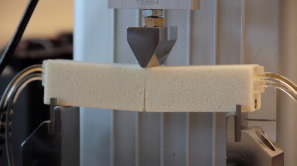FOR IMMEDIATE RELEASE | June 07, 2012
Without a scratch: New American Chemical Society video on self-healing plastics
WASHINGTON, June 7, 2012 — A new American Chemical Society (ACS) video explores materials that mimic the human skin’s ability to heal scratches and cuts in the latest episode of its award-winning Bytesize Science series. The video is available at www.BytesizeScience.com.
The video takes viewers on a tour of the lab of Nancy Sottos, Ph.D., who has published articles on the self-healing plastics in a number of ACS peer-reviewed scientific journals. She is an engineering professor at the University of Illinois at Urbana–Champaign. Inspired by human skin, the plastics repair themselves by “bleeding” healing agents when they are cut or scratched.
Media Contact
Michael Bernstein
202-872-6042
m_bernstein@acs.org
Michael Woods
202-872-6293
m_woods@acs.org
This development offers the promise of cell phones, laptops, cars and other products with self-repairing, longer-lasting surfaces. However, Sottos anticipates that it may be awhile before the self-healing technology is widely used in electronic goods. She expects it will first be used in more durable, self-healing paints and coatings.
For additional entertaining video podcasts from ACS, go to www.bytesizescience.com. The Bytesize Science series is produced by the ACS Office of Public Affairs.
For more entertaining, informative science videos and podcasts from the ACS Office of Public Affairs, view Prized Science, Spellbound, Science Elements and Global Challenges/Chemistry Solutions.
To automatically receive news releases from the American Chemical Society contact newsroom@acs.org.
###

healing material features a vascular network that
can deliver healing agents to repair cracks.

